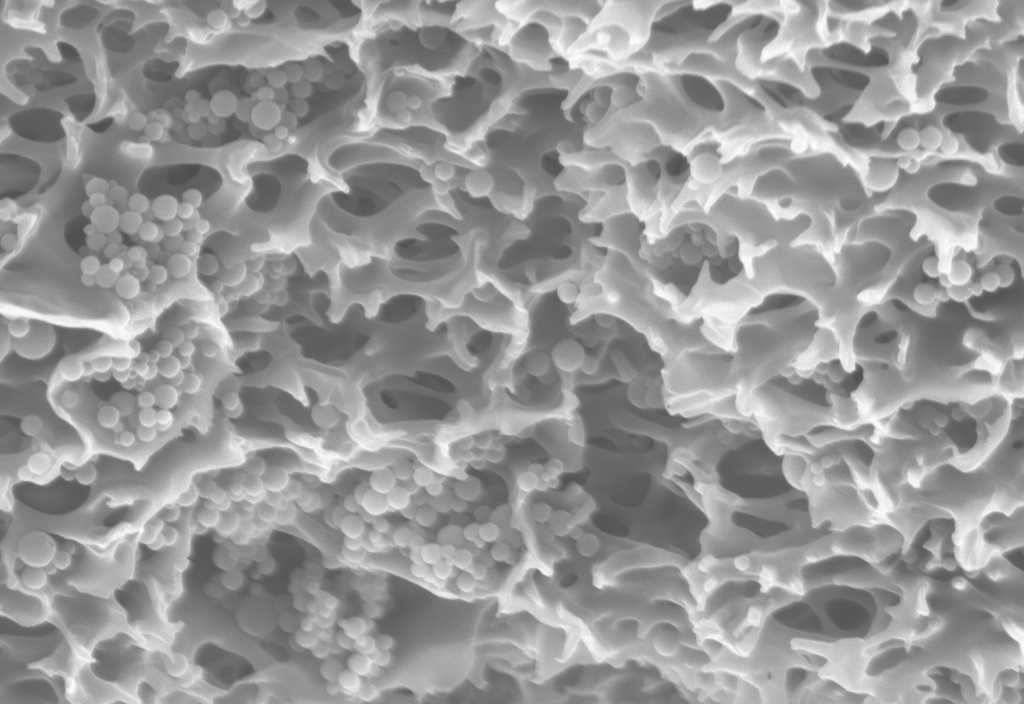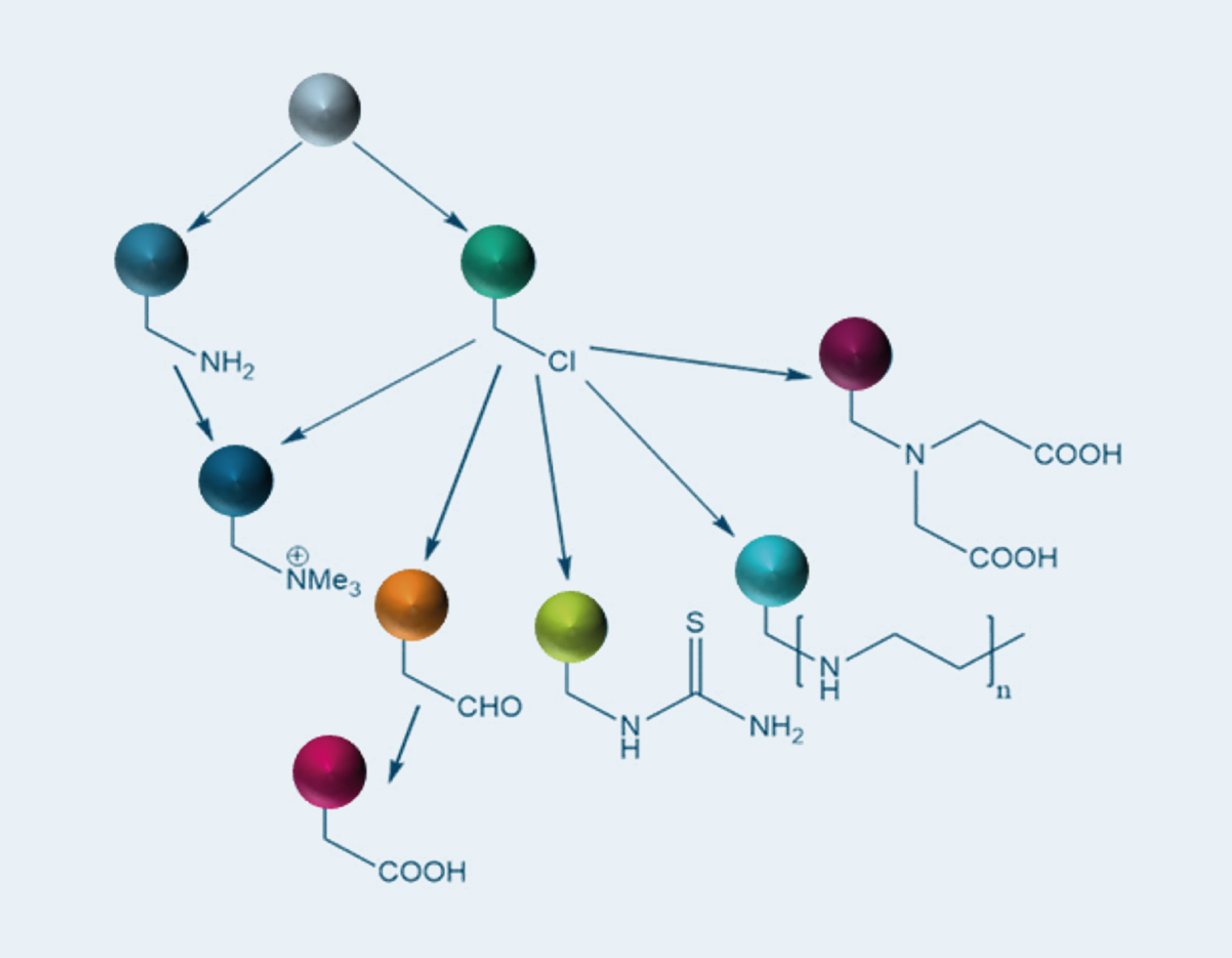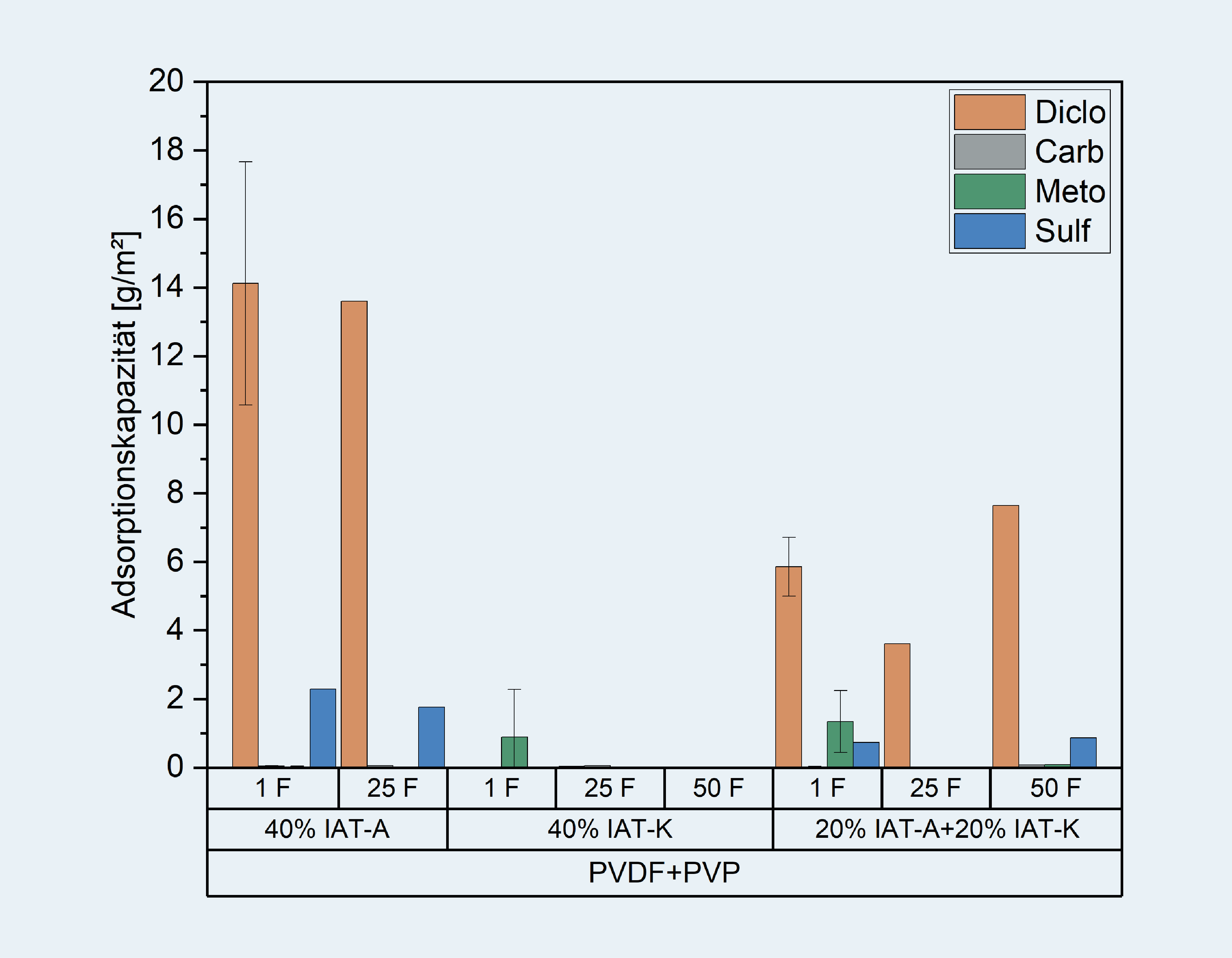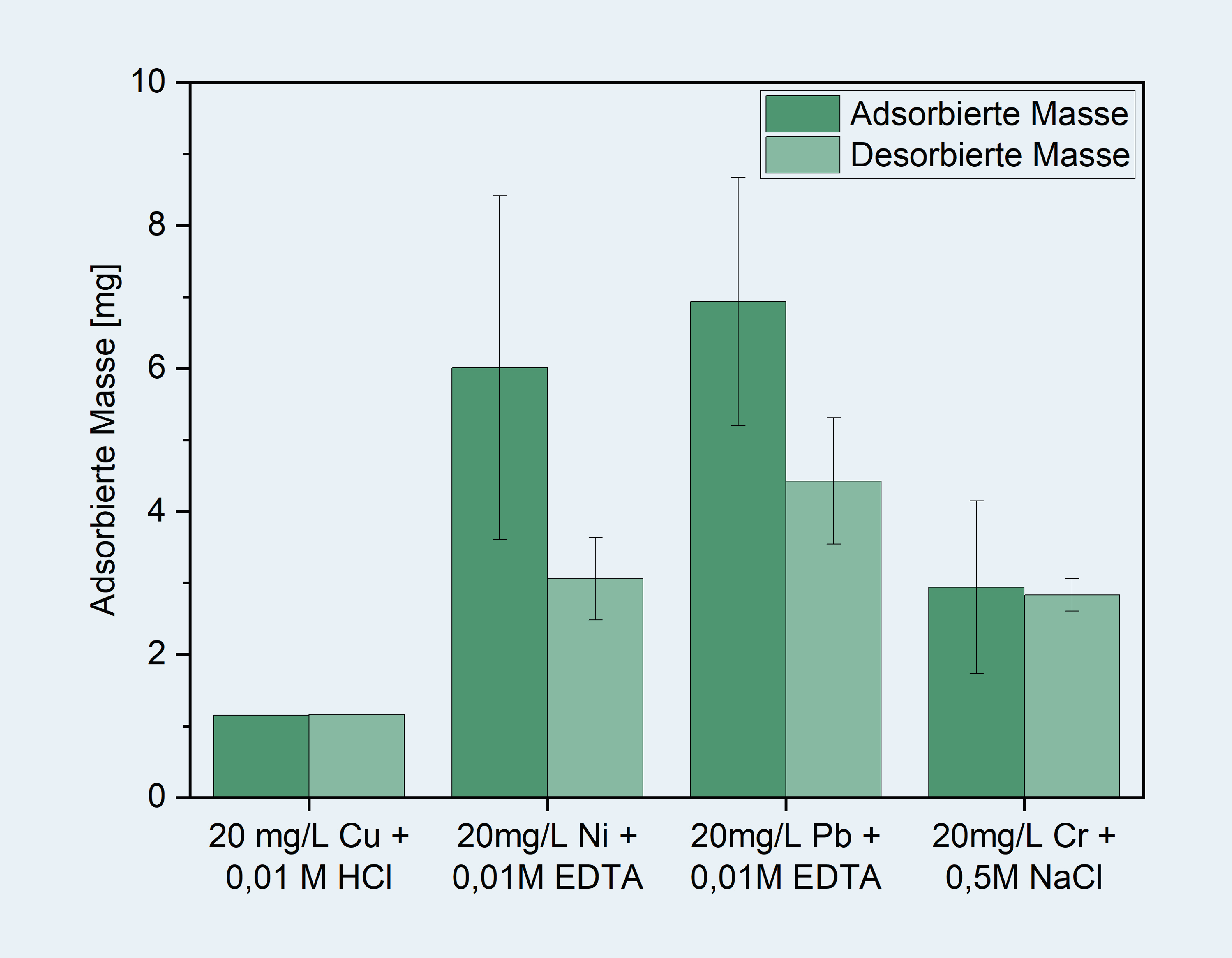Subproject: Development of mixed-matrix membranes
A whole range of different membrane types is already available today for water filtration. What these commercially used membranes have in common is that essentially the different separation layers are used functionally for size exclusion. In contrast, the underlying porous structure, which offers a high specific surface area, remains unused. In this project, materials and processes were developed to fully utilize the membrane spatially. New coating materials and new particulate additives were developed for this purpose. These were integrated into the membrane either directly in the manufacturing process or in a post-treatment step. This approach makes membranes accessible that can adsorptively bind substances dissolved in water in addition to their filtration function.
Through an innovative integration of functional coatings and surface-modified particles in membranes, mixed-matrix membrane adsorbers with multifunctional inner surfaces were developed that bind different groups of substances with high capacity and selectivity.
In a first step, material libraries for the coating and for functional particles were built in parallel for this purpose, and procedures for integrating these materials into membranes were developed. These developments were then combined in a second step and scaled up to pilot scale in a third step. Functional tests were performed at each development level (separation of micropollutants and heavy metals) and the most promising approaches were selected. Finally, demonstrator modules with up to 0.1 m2 membrane separation area were tested with real separation problems.
The project consortium consisted of the Chair of Technical Chemistry II at the University of Duisburg-Essen, the Fraunhofer Institute for Interfacial Engineering and Biotechnology IGB, and the two companies poromembrane and FUMATECH BWT. The partners each brought complementary know-how to the project.
A large number of different mixed-matrix membranes were developed at the IGB. Particles with different chemical surface groups (Figure 1) were homogeneously integrated into different membrane matrices. Thus, a material database of different particles and membranes could be built up. Especially anion and cation exchangers turned out to be particularly suitable at this point. With the mixed-matrix membrane adsorbers, it was possible to successfully remove three model micropollutants (diclofenac, metoprolol, sulfamethoxazole) from different water matrices (Figure 2). It was also demonstrated that diclofenac, for example, can be removed from real drinking water samples even at low concentrations of 2 μg/L diclofenac. Before breakthrough (defined at 10% of the initial concentrationan), the retention of diclofenac is over 99%. The last measuring point before breakthrough was used to determine the adsorption capacity, which means that breakthrough was achieved at a permeate volume of approx. 4.2 L. The adsorption capacity of the water samples was determined on the basis of the permeate volume. In this case, this results in an adsorption capacity of the mixed-matrix membrane adsorber of more than 20.4 mg/m² for diclofenac. With a mixed-matrix membrane adsorber of this capacity and a membrane separation area of 1 m², diclofenac at a concentration of 2 μg/L could be separated from approximately 10 m³ of water.
Separation of heavy metals such as Pb, Cu and Cr is also possible with these membrane adsorbers. In addition, the project demonstrated both the scalability and regeneration of the mixed-matrix membrane adsorbers (Figure 3).
 Fraunhofer Institute for Interfacial Engineering and Biotechnology IGB
Fraunhofer Institute for Interfacial Engineering and Biotechnology IGB



